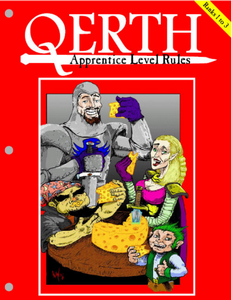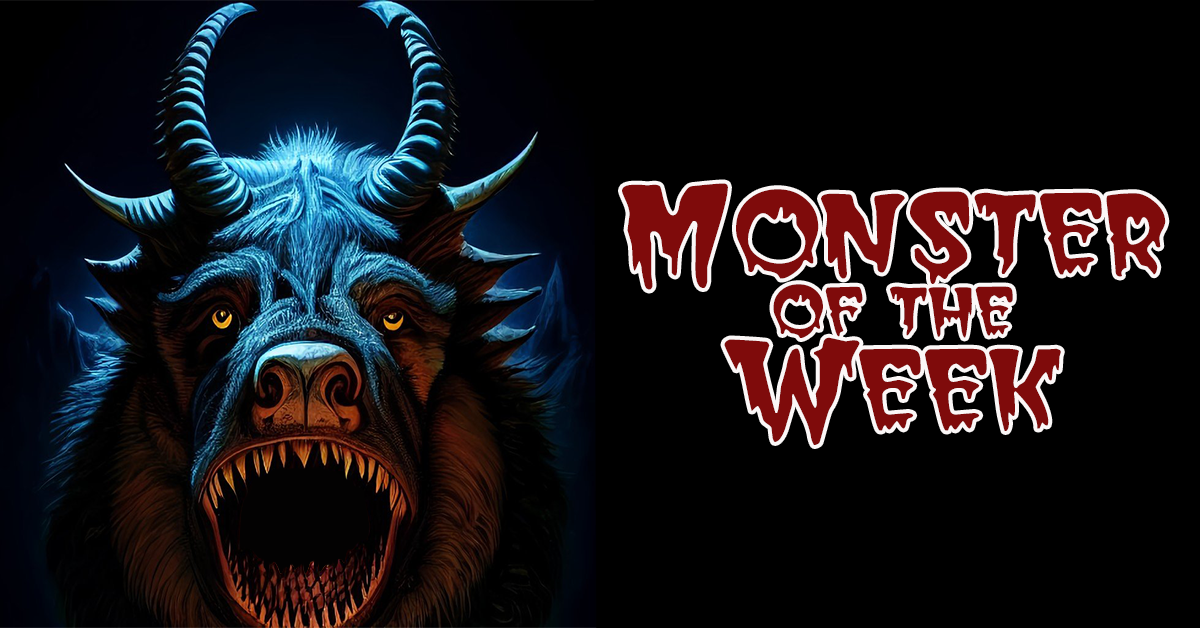We may earn money or products from the companies mentioned in this post.
Chapter 2 describes the PC races for the new version of Dungeons & Dragons and starts up with about half of page of fluff about character races wherein the writers adorably try to pretend that different races appear as PCs in roughly the same proportions that they appear in game fiction. The multiple mentions of the rarity of Drow is particularly amusing given how often they show up in games. After some notes about the format, we’re off to the races.
Dwarves
They’re short. They’ve got long beards. They’re into rocks, metal, and forges. Their society is orderly. They love gold and think elves are flighty. So not much new here except for more focus on the importance of clan affiliation than I remember in the core rulebooks of previous editions. One tidbit about Dwarven society that was new to me (or maybe I read it in the Complete Dwarf Splatbook when I was in high school but forgot) is the idea that a Dwarf’s name (which is always the name of an ancestor) belongs to his clan, not himself, and that he’s expected to live up to the name. That’s kind of neat.
 There aren’t a lot of changes on the ability front. The only really new thing is that Dwarves get Tool Proficiency in either smith’s, brewer’s or mason’s tools (though oddly not miner’s tools). It’s almost like they read the expanded Qerth tables and realized “Hey, giving Dwarves some of those craft skills we’re always talking about Dwarves having is a pretty good idea. We should steal it.” But since the expanded Qerth table for Dwarves has never been published (look for it in The Comprehensive Dwarf, coming sometime in the distant future if Leighton and I live long enough), I’m forced to conclude that this innovation was a case of parallel development. The other change is that Stonecunning (3E’s combination of all the Dwarf’s “knows a lot about rocks” abilities from previous editions) has been downgraded to just knowing historical information about rocks. Man, I never thought I’d miss “Detect Grade/Slope,” but I kinda do. Is there such a thing as Phantom Useless Ability Syndrome?
There aren’t a lot of changes on the ability front. The only really new thing is that Dwarves get Tool Proficiency in either smith’s, brewer’s or mason’s tools (though oddly not miner’s tools). It’s almost like they read the expanded Qerth tables and realized “Hey, giving Dwarves some of those craft skills we’re always talking about Dwarves having is a pretty good idea. We should steal it.” But since the expanded Qerth table for Dwarves has never been published (look for it in The Comprehensive Dwarf, coming sometime in the distant future if Leighton and I live long enough), I’m forced to conclude that this innovation was a case of parallel development. The other change is that Stonecunning (3E’s combination of all the Dwarf’s “knows a lot about rocks” abilities from previous editions) has been downgraded to just knowing historical information about rocks. Man, I never thought I’d miss “Detect Grade/Slope,” but I kinda do. Is there such a thing as Phantom Useless Ability Syndrome?
Every race (except Humans) also includes subraces. For Dwarves, the choices are Hill Dwarf and Mountain Dwarf (Duergar are mentioned in a short sidebar, but aren’t allowed as PCs). Each of the Dwarven subraces gets an ability bonus and an additional racial ability (Wisdom and toughness for Hill Dwarves, Strength and armor for Mountain Dwarves). It’s also mentioned that Mountain Dwarves are taller than Hill Dwarves. This seems like an odd outcome of natural selection given that Mountain Dwarves spend more time underground where being tall would make it harder to navigate cramped passageways. I guess that’s just the kind of thing that happens in a magical world of adventure.
There’s also a sidebar with the classic racial stereotypes alongside each Race description, but it only includes the Big Four: Dwarves, Elves, Halflings, and Humans. Because fuck Gnomes.
Elves
As we all know, Elves are so pretty they’ll make you swoon. They’re also graceful, agile, fierce in battle, intelligent, good with animals, trustworthy, loyal, helpful, friendly, courteous, kind, obedient, cheerful, thrifty, brave, clean, and reverent. Elves are noted for their skill in warfare, magic, gardening, interpretive dance, poetry, music, architecture, literary analysis, hunting, basket weaving, found object art, cooking, macrame, and Mrs. Pac-Man. Also, they live forever and poop ice cream.
After all the overwrought prose about how nifty and cool elves are, we come to the “Names” section. Whereas Dwarves recycle the same names over and over again, every Elf creates his own special little name that’s just for him upon reaching adulthood. Because apparently they’re going all-in with this “every race as unique naming traditions” thing. And apparently these naming conventions are consistent across all populations of that race across all D&D worlds. Well that just stopped being kind of neat in a hurry.
Elven special abilities haven’t changed much since third edition other than to fit the new rules, though they have lost their bonus with swords and bows (which I think was still there in 3E). Well, at least until you get to the subraces. High Elves get bow & sword proficiency, plus a cantrip, an extra language, and an Intelligence Bonus. Hey look! Wood Elves get the sword and bow proficiency, too (along with increased speed, woodland stealth, and a Wisdom bonus). You’ll notice that all the Elves have three sub-race features in contrast to the Dwarf’s two. Because game balance, I assume.
Ok, so really it turns out that the Drow are the only subrace that doesn’t get the traditional bow & sword bonus. Well, at least they don’t get it with 75% of the traditional Elven swords and bows. Their proficiencies are with rapiers, shortswords, and crossbows instead. They also get super-duper darkvision and the classic Drow spell abilities (Dancing Lights to start, Faerie Fire at 3rd Level, and Darkness at 5th Level). Also, Drow are totally rare you guys. You probably won’t even meet one (unless they make up 80% of your party, that is). Unlike the other subraces, Drow have a disadvantage in the form of sensitivity to light, but it’s considerably less brutal than in previous editions (basically just a penalty to attack rolls and perception checks; I’m reasonably sure sunlight used to cause damage like they were really pretty vampires or something).
The Elf section ends with a sidebar about how swell Drizzt is, because of course it does.
Halflings
I haven’t been mentioning the art so far this post because I think we’ve already established that I’m not a fan, but holy shit the Halfling picture is horrific. If Rob Liefeld decided to create a sepia-toned watercolor of a female version of Warwick Davis about halfway through make-up for Leprechaun in the Hood, it would look like the Halfling picture on page 26. I mean…just…fuck.
For those of you just tuning in, Halflings started out as Hobbits, but Gygax immediately ran into the problem of Hobbits wanting fuckall to do with adventuring (he also ran into the problem of the Tolkien Estate being very litigious, which is why Hobbits became Halflings). To solve this problem, ol’ Gary latched onto the theoretical adventuring job of the original adventuring Hobbit and decided that Hobbits made great thieves. As you may know, the D&D meaning of “thief” is considerably different from the Hobbit usage, where it meant something along the lines of “not really a thief at all, but Bilbo’s sneaky and clever and Gandalf wants the Dwarves to take him along so that’s what he’s telling Thorin.” This led to a weird split-personality for Halflings: They’re simple rural farm folk who just want to stay home and smoke their pipes, but they’re also world-wise master thieves who will rob you blind and bang your mom. It’s always been weird, and I remember 3E trying to fix it by downplaying the Hobbit stuff in favor of something closer to (but less annoying than) the Kender from DragonLance. This didn’t last. In 5E, these little fuckers are Hobbits again. Or sometimes nomadic Hobbits. For some reason they keep bringing up halfling nomads.
Halfling names are just regular old names, and Halfling abilities are variations on the old standbys. The only thing that looked new to me was the Lucky ability, which lets them re-roll 1s on attack rolls, ability checks, and saves. There are two subraces for Halflings (Lightfoot and Stout), each with a modestly Dwarven pair of sub-racial bonus features.
Humans
I haven’t mentioned it yet, but each race description starts with a quote from a D&D novel. So far we’ve had two from R.A. Salvatore and one from DragonLance. Humans get Elaine Cunningham’s Elfshadow, which seems like a step down. Oh well, at least it’s not Rose Estes. Anyway, you can probably guess, that the description of Humans is all about how versatile they are and how much range they display in terms of whatever characteristic is being discussed at the moment.
Where the other races so far have just had names, the Human section is titled “Names and Ethnicities” and once again talks about how there are a bunch of different types of humans. To demonstrate, it describes the 9 human ethnicities of the Forgotten Realms, complete with physical descriptions and common names. Some of these (Calishite, Illuskan) are vaguely familiar as nationalities that I remember from all those Forgotten Realms books I read in high school. At least one (Shou) was familiar as the generic name for the Realms version of Asians. The rest were (or at least seemed–it’s been a long time) new to me. Apparently the Forgotten Realms got a visit from some (probably idealistically icky) old-timey anthropologists when I wasn’t looking.
By default, Humans get +1 to every ability score. It’s a boring and generic racial feature, but from a min/max perspective it’s not too shabby. A slightly more interesting option is a variant rule for gaming groups who use the (apparently now) optional Feats rules. Under the variant, Humans get +1 to two different ability scores, a bonus Skill, and a bonus Feat. The Skill and Feat are both “of your choice,” so I assume the ability bonuses are the player’s choice as well. I would have expected them to be based on heritage or culture, especially after they’ve gone through the trouble of listing all those ethnic groups, but can see how a “Vikings get +1 Strength, +1 Constitution, Sailing, and Shield Bash” kind of set-up could veer into racist stereotypes very quickly, especially since many of those Forgotten Realms ethnicities have clear real-world analogs. It’s probably best to reserve the broad stereotypes for the fantasy races.
But Wait, There’s More!
For those of you who are keen students of alphabetical order, you’ll note that Gnomes and the two Half-something races haven’t been mentioned yet, much less the weird shit from 4E. That’s because the races are divided into two sets. The given explanation is that the races we’ve seen so far are the common ones and the others are “uncommon” (and not necessarily approved for all games, so ask your GM), which makes sense if you ignore the fact that Half-Elves are often even more common than Drow. I suspect the real reason has more to do the fact that making Dragonborn the first race in the chapter would have just been weird. Anyway, I applaud the decision for two reasons: (1) Making the first race on the list Dragonborn would have been weird: and (2) it gives me an excuse to break this chapter down into two posts. I’m really not mentally prepared for Gnomes just yet, much less the Star Wars Cantina races.
Next Week: Bastards, Gnomes, and the Weird Shit from 4E!






